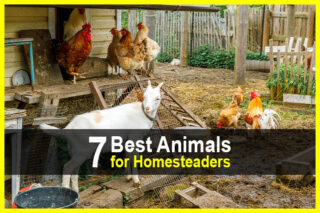Estimated reading time: 9 minutes
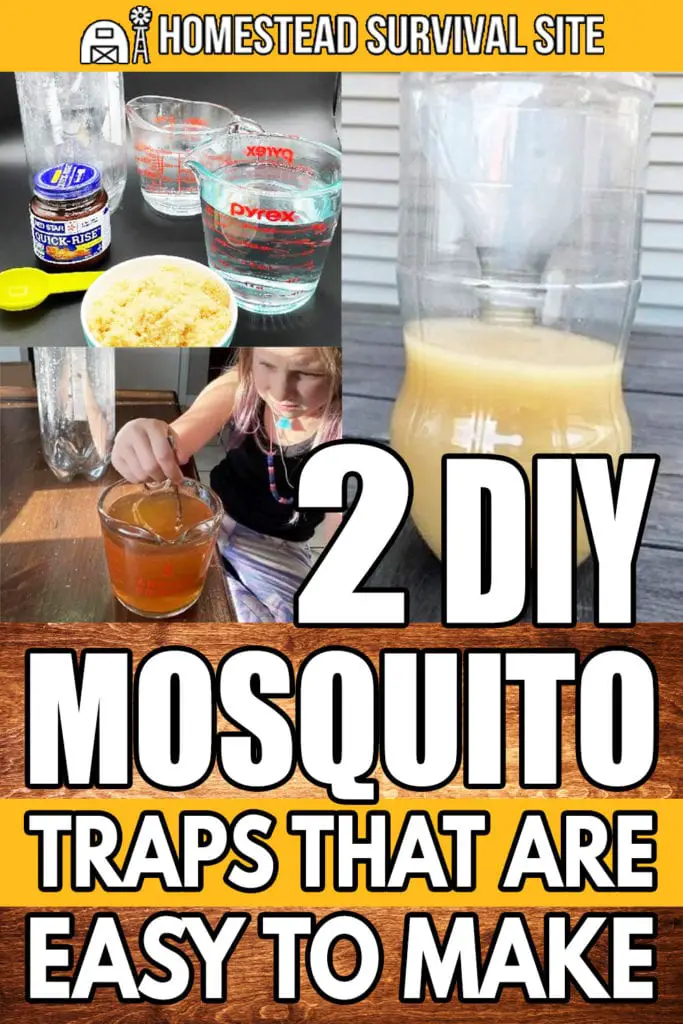
There is nothing like a mosquito invasion to ruin time in the backyard. We live close enough to a river to have an influx of the pesky invaders to negatively affect a family BBQ or bonfire.
We have tried mosquito foggers only to regret the chemicals we have blasted in the air, and my husband hates bathing in deet. Though foggers and deet repellants are labeled as safe, we prefer to find more natural alternatives.
After looking into mosquito traps as a substitute to bug sprays and foggers, I was caught off guard by the price of the commercial traps. However, I discovered that I could easily make my own.
There are two simple DIY mosquito traps you can make at home that work. Both require ingredients you probably already have on hand. In addition, you can also make your own natural bug spray to keep the clean-ingredient options going.
Want to save this post for later? Click Here to Pin It On Pinterest!
Placement
Before you even make your traps, evaluate your backyard to assess where you might have the biggest mosquito problems. Mosquitos do not love warm sunlight. Though they come out at night when the temperature drops, consider a setup in a shadier part of your yard to help eliminate those early evening fliers.
Try to eliminate any standing water in your yard. Removing this natural breeding ground for mosquitos will help eradicate many of them from your outdoor oasis. If you have a damper area of your yard, this will be an ideal location for a trap.
Mosquitos typically hang out 4-6 feet from the ground, so place your trap in an area that you think they may fly past. We placed one on our table where we often sit, and we hung another from the tree in the shadiest area of our yard.
Getting started
The first mosquito trap is great to hang in a shady tree where mosquitos may spend much of their day. This trap has a scent that draws bugs to investigate further.
Once the bug flies in, it usually can’t fly out and drowns. Because this trap has such an attractive smell to bugs, you may want to keep it away from where you might eat outdoors.
Amish Flying Insect Trap

Supplies Needed:
- An empty 2-liter soda bottle (keep the cap!)
- 2 banana peels
- 1 cup of sugar
- 1 cup of vinegar
- 2 cups of water
- String or rope to hang the trap
- Funnel
For this trap, you will leave the bottle in tact to easily hang from a tree. This project is great to have kids help with.
Step 1: Separate and roll your banana peel pieces like a pencil to more simply fit into the bottle mouth.
Step 2: Use a funnel to add the sugar, water, and vinegar.
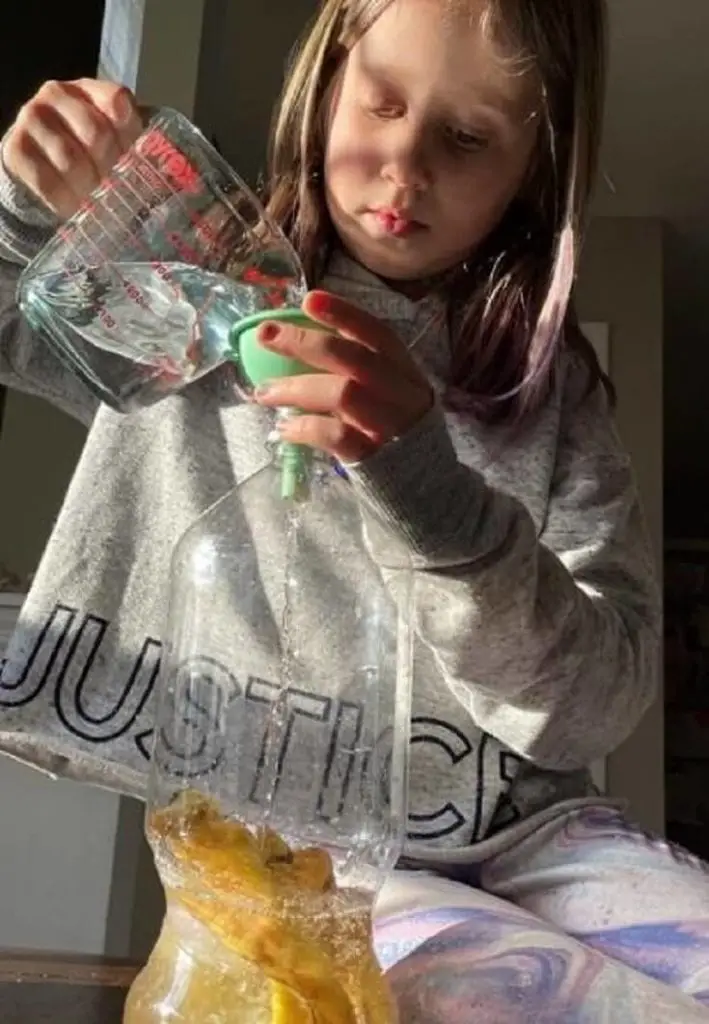
Step 3: Once all of your ingredients are in the bottle, add a cap and shake up the combination of ingredients to mix. Once it is combined, take off the cap but save it for when you are ready to dispose the trap.
If you didn’t keep the cap, simply disolve the sugar in the water before you add it to the bottle and swirl everything together.
Step 4: Once your bottle is ready to go, hang the trap from a branch around eye level by tying a knot around the bottleneck and your branch. You want the banana peel to be submerged in the liquid, so give a bonus swirl if necessary.
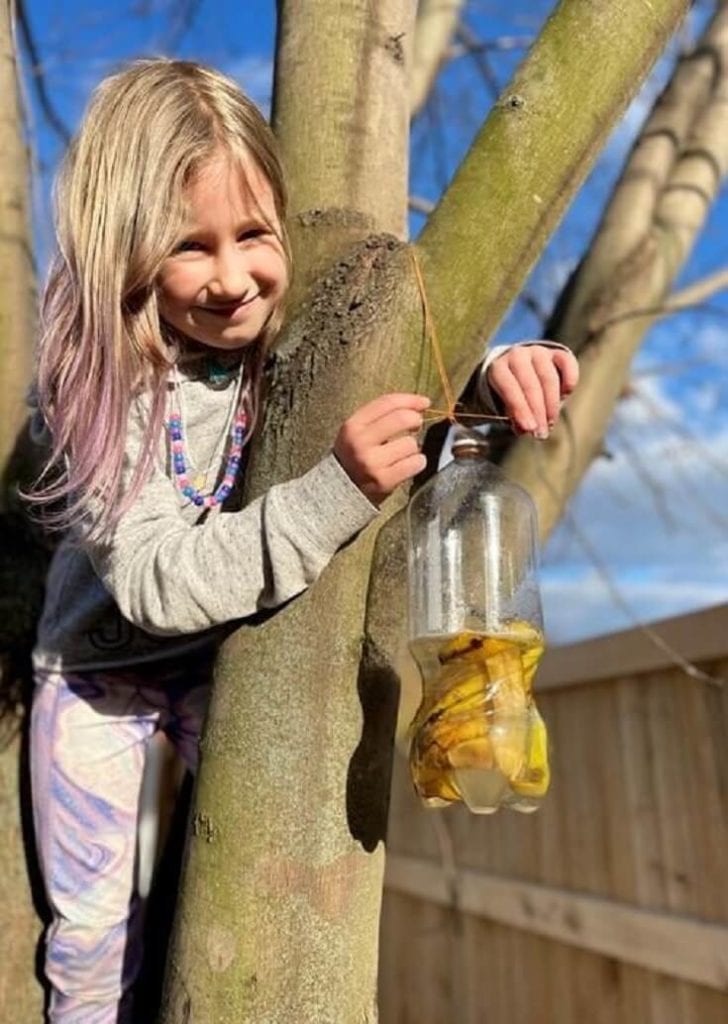
Tips: This trap is highly effective for capturing and eradicating mosquitos, flies, and even some fall yellow jackets. These pesky bugs and most drawn to the smell. Because the scent attracts bugs, keep this away from an area of the yard where you may have food or beverages.
Choose a sturdy branch to tie it to, the trap is heavy once it is full. Unfortunently, this is not a trap that you can easily re-use since the banana peels will eventually rot. Once you feel the trap is no longer effective you can cap the trap and discard the whole bottle.
Because this trap can attract a variety of bugs, it is ethical to keep an eye on what is succumbing inside. It will mostly attract bugs that are the intended target, but if you are collecting any peaceful pollinator bees, consider moving the trap further from the garden. As homesteaders, we have to be conscious of our protection of the environment, which should include a watchful eye for honey bees.
I would recommend using a green soda bottle if you are able. Mosquitos are drawn to darker colors so this step may help make your traps most effective, I worked with what I had knowing the smell was the biggest attracter.
Yeast and Brown Sugar Trap
Yeast is a living organism that consumes sugar. This process naturally creates carbon dioxide to slowly be released. This reaction is what helps bread rise in baking. Mosquitos are drawn to carbon dioxide, which is why they find us so quickly outside as we breath.
This trap is best used for about two weeks while the yeast and sugar are actively working together. Mosquitos are drawn into the mixture that is releasing carbon dioxide and can’t make their way back out after being funneled to the liquid, so they drown.

Supplies Needed:
- An empty 2-liter soda bottle
- 1 TBS of dry yeast
- 1 cup of brown sugar
- 3 cups of warm water
- Scissors or Exacto knife
Step 1: First, cut your bottle into two pieces. Make your cut about 1/3 of the way down. The top half will be flipped upside-down and set inside the lower half. You want plenty of room in your bottle for some space between the upside-down mouth and the liquid in the bottom of the bottle.
Step 2: While your water is warm, mix in the brown sugar until it dissolves. I recommend doing this in a glass container, as opposed to your plastic bottle.
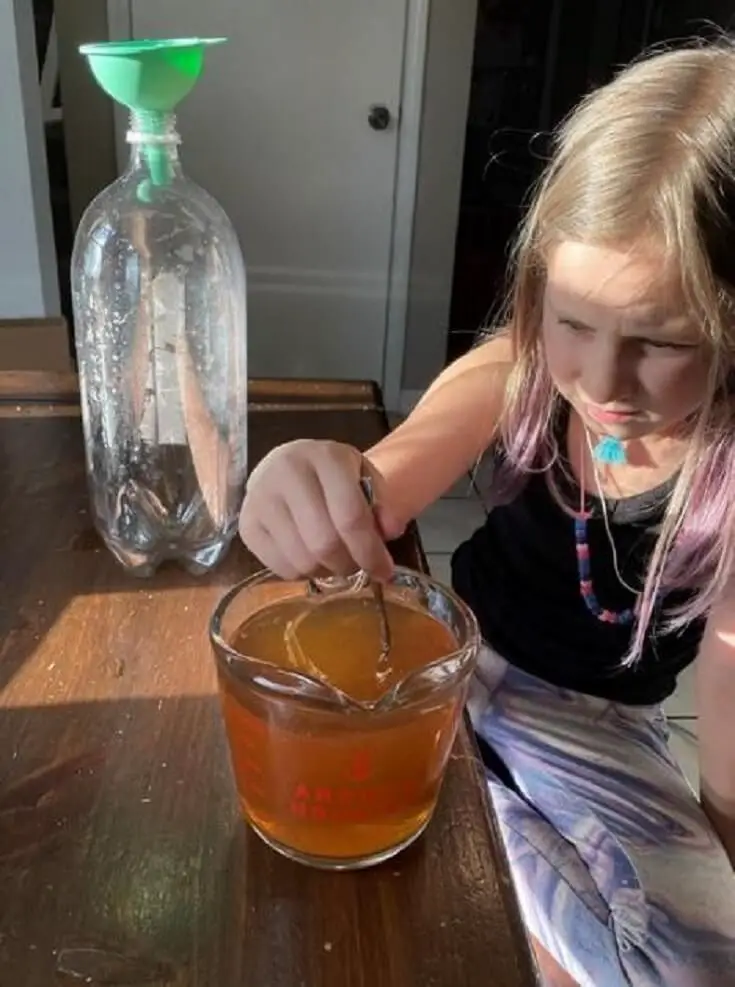
Step 3: Once your water and sugar are thoroughly mixed and the water is cooled, you can pour the liquid into the bottle.
Step 4: Add in the yeast; it is unnecessary to stir. Because the yeast slowly consumes the sugar, you will not need to do any further agitating. Though if you have kid helpers, like me, you may have some stirring anyway. This will not hurt the reaction.
Step 5: You can now take the mouth-end half of the bottle and insert it upside-down into the lower-half of the bottle with the liquid. If you feel there’s not enough room between the mouth of the bottle and the liquid, you can pour some out.
Step 6: Taping the edges will help secure your trap.
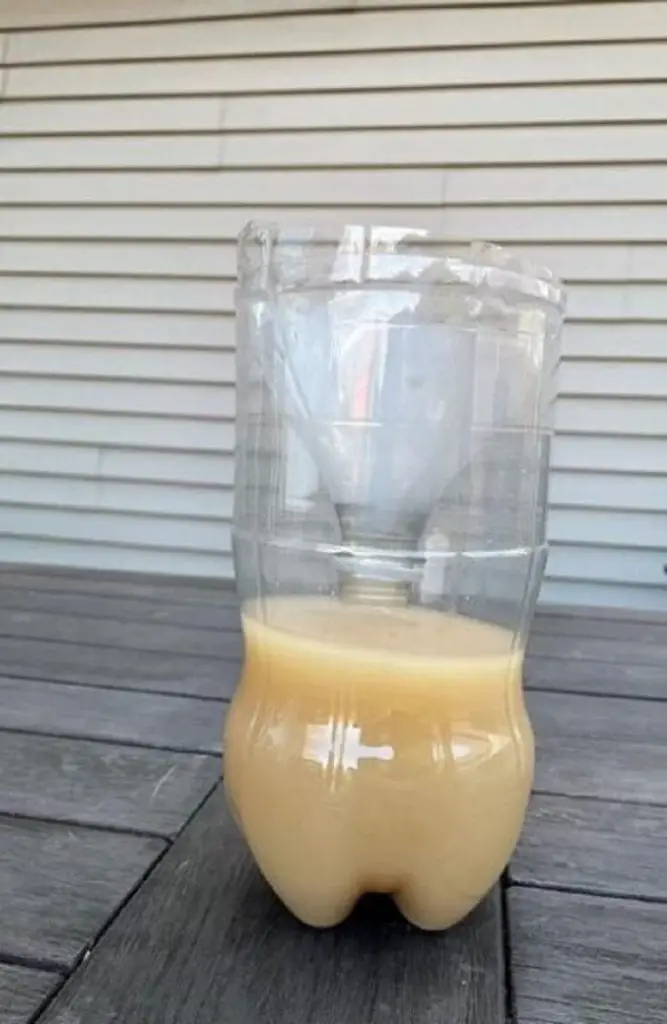
Tips: This trap can continue working for two weeks. Although, if you collect too many bugs, you may want to swap out the solution sooner. This trap is easily reused by swapping the liquid when it is no longer effective.
Because this bottle can easily spill if it is knocked over, you should keep it in a location where it is noticeable to everyone and out of the way of foot traffic. It is best suited for a solid surface in an area that you have mosquitos frequenting.
Concluding Tips
Though these traps alone are not enough to eliminate mosquitos from your outdoor gatherings, they will help to lower the number. Using these in combination with other natural options will help you be on your way to less mosquitos.
Incorporating some mosquito-repelling herbs into your garden, like citronella grass, catnip, lavender, and rosemary will offer another layer of deterrent. Using the same scents in citronella candles, essential oils, and natural bug spray will help, too.
Remember to eliminate standing water from your yard. Mosquitos often lay eggs in shallow, warm water, so dumping even small natural rain catches will be helpful to keep numbers down.
Stay aware that there are several factors that attract mosquitos in the first place. They are most attracted to the carbon dioxide we breathe. If you can add a fan to your gathering, especially at a mealtime, the carbon dioxide gets a bit more broken up in the air which may confuse mosquitos.
If you are doing an activity that might make you sweaty, know that this will make you more appealing to mosquitos from the sweat and the warmth of your blood flow. Mosquitos are drawn to humidity. You are also likely breathing out more carbon dioxide during sports or other strenuous activity.
If you switch activities and you are going to sit down for the night, consider changing out of sweaty clothes. It is ideal to wear pants that cover your arms and legs, and lighter colors may help keep you cool if the sun is still out while you are outside. Mosquitos are also less attracted to light colors.
And finally, if you plan to enjoy a beer at an afternoon BBQ, remember that sugar and yeast (active beer ingredients) create carbon dioxide which attracts mosquitos. If these ingredients are what we are using in our trap, having a beer will most certainly make you more appealing to mosquitos and will make other preventative measures especially worthwhile.
Like this post? Don't Forget to Pin It On Pinterest!









